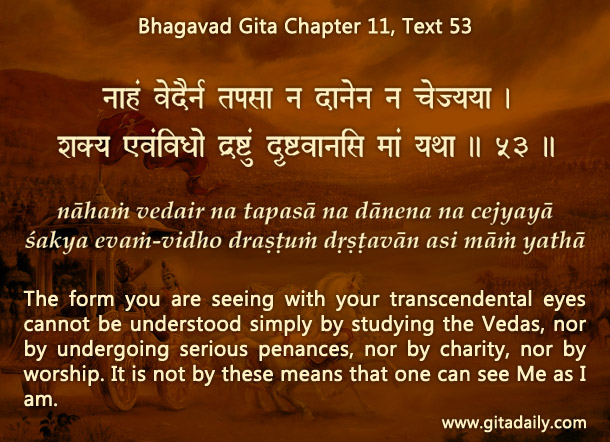The yoga of the heart refers to bhakti-yoga, the yoga that centers on spiritualizing our heart’s central force: love.
The heart of yoga refers to its innermost essence, its highest feature: the topmost spiritual reality. Let’s see how the two are related.
The word ‘yoga’ often brings to mind people bending the body into various shapes and postures. Such conceptions of yoga, though correct, are not complete. They refer to one limb (yogasana) of one type of yoga (ashtanga-yoga).
All these yogas take us closer to Krishna, but bhakti-yoga alone takes us to him.
Generically, the word ‘yoga’ means connection – connection between the soul and the supreme spiritual truth. The Bhagavad-gita (07.07) reveals that truth to be none other than Krishna. For establishing our connection with him, there are, apart from ashtanga-yoga, other ways such as karma-yoga, jnana-yoga and bhakti-yoga. All these yogas take us closer to Krishna, but bhakti-yoga alone takes us to him. The Gita (06.47) declares that among all yogis bhakti-yogis are most intimately united with him. Later, the Gita (11.54) declares that he can be known in truth only through devotion – and by no other way, as the previous verse (11.53) emphasizes.
Why so?
Because we are infinitesimal and Krishna is infinite; so the only way we can know him is if he reveals himself to us. And he does so when he is satisfied by our sincere desire to love him selflessly. Bhakti-yoga is the systematic process for cultivating this divine desire. By practicing bhakti-yoga diligently, we receive Krishna’s self-revelation. This helps us to comprehend better that there is no truth higher than him and relish more his glory and beauty. Thus, he becomes experientially confirmed within our head and heart as the innermost essence of yoga, the very heart of yoga.
Thus does the yoga of the heart reveal the heart of yoga.


In CC Madhya 21.123 Lord Gauranga enthralled in escalating ecstasy, describes the pure beauty of Lord Krishna by quoting the Srimad Bhagavatam): ‘All men and women were accustomed to enjoying the beauty of the shining face of Lord Kṛiṣhṇa, as well as His shark-shaped earrings swinging on His ears. His beautiful features, His cheeks and His playful smiles all combined to form a constant festival for the eyes, and the blinking of the eyes became obstacles that impeded one from seeing that beauty. For this reason, men and women became very angry at the creator (Lord Brahma).’(SB 9.24.65).